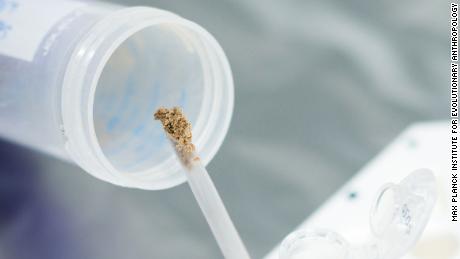microbiome, which differs significantly to those found in people living in modern industrialized societies, according to a
study published in the journal Nature on Wednesday.
The microbiome is a combination of fungi, bacteria and viruses that resides in your gut, primarily in the large intestine, helping digest food, fight disease and regulate the immune system.
Previous research has made a connection between preindustrial diets, greater diversity in the gut microbiome and lower rates of chronic illnesses, and the team set out to find reconstruct ancient human gut microbiomes to investigate this link, researcher Aleksandar Kostic of the Joslin Diabetes Center in Boston told CNN.
Research in the field has been held back by a lack of well-preserved DNA samples, but the team were able to perform a detailed genetic analysis of eight human feces samples found in Mexico and the southwestern United States, which date from 1,000-2,000 years ago.
The feces were “exquisitely preserved” thanks to the extreme aridity of the desert areas where they were found, Kostic told CNN.
Researchers reconstructed a total of 498 microbial genomes and concluded that 181 were from ancient humans. Of those, 61 had not previously been found in other samples.
The team then compared them with present-day gut microbiomes from industrial and nonindustrial populations and found that the ancient ones are closer to today’s non-industrial genomes.
A nonindustrial lifestyle is “characterized by consumption of unprocessed and self-produced foods, limited antibiotic use and a more active lifestyle,” according to the study, which uses samples from Fiji, Madagascar, Peru, Tanzania and a Mazahua indigenous community in central Mexico.
Both the ancient and modern nonindustrial genomes contain more genes used to metabolize starches. This may be because people in these societies ate more complex carbohydrates compared with present-day industrial populations.
When microbes disappear or become extinct there are knock-on effects on our health, Kostic told CNN.
“When they’re gone we’re missing a key piece of what makes us us,” he said.
While research is at an early stage, Kostic hopes the microbes reconstructed by the team could eventually be used to reduce the rate of chronic conditions such as obesity or autoimmune diseases.
“We could reseed people with these human-associated microbes,” he said.
Research in the field is advancing, said Kostic, with some fecal microbic transplants working toward approval from the US Food and Drug Administration.
The plan is to first see if the rediscovered microbes are in fact present in nonindustrial populations alive today, and then introduce gut biomes from nonindustrial people into animals to see how they are affected.
Next is pinpointing certain microbes that can be introduced to the human gut, and then using synthetic biology to reconstruct them, Kostic said.
At the same time, more archeological research is needed to determine if there is “a unified human microbiome that used to exist,” he added.
In the meantime, Kostic said there’s nothing we as individuals can do to bring back extinct microbes to our gut microbiomes.
However, we can boost the diversity of our gut microbiomes by eating fiber and complex carbohydrates, exercising and coming into contact with soil and animals, he added.





